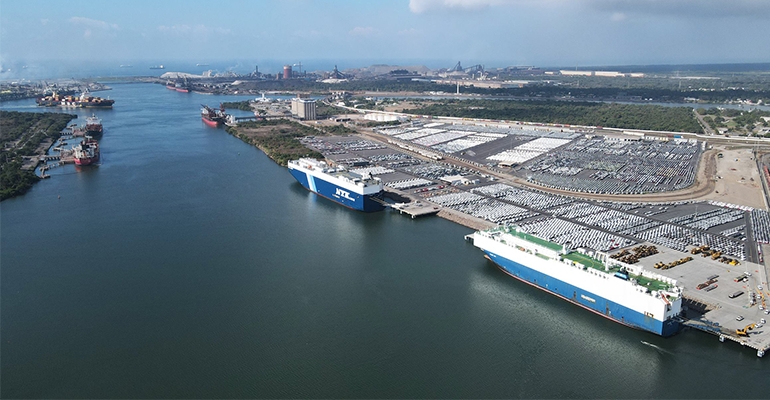Analyst Xenata highlighted annual growth figures for Chinese goods handled in Mexican ports increased 34.8% in 2023, compared to just 3.5% the previous year. Increases in Mexico bound freight are continuing this year with January’s year-on-year growth surging further from 73,000 teu to 117,000 teu.
Peter Sand, Xeneta Chief Analyst, says the latest data could be further evidence of businesses attempting to circumvent tariffs on goods imported from China into the US, which were largely put in place during Trump’s previous Presidency.
Sand said: “The strength in trade between China and Mexico was building during 2023 but the latest data for January 2024 reveals a massive increase. It is probably the fastest growing trade on planet Earth right now.
Trump said in interview aired by Fox News in February he was considering a plan to impose tariffs of 60% or higher on Chinese goods in his potential second Presidency. “We have to do it,” he said.
Going further yet further at the weekend Trump vowed to impose 100% tariffs on Chinese cars imported into the US from Mexico.
Speaking in the car manufacturing centre of Ohio Trump reportedly told supporters “You screw us and we’ll screw you,” he said. “It’s very simple, very fair.”
But Xeneta’s Sand told Seatrade Maritime News that tariffs do not work in this way and that the effectiveness of tariffs imposed can be seen by the latest data which shows Mexican cargo increasing rapidly.
China’s trade with Mexico “Is probably the fastest growing trade on planet Earth right now”.
Sand explained that tariffs have not substantially decreased trade between China and US but they will increase the cost of Chinese goods for American consumers.
“Trump may claim that the Chinese are paying, but in the end it is the Americans who are paying in monetary terms,” said Sand, who added if tariffs had been really effective over the last five years, then the US would not see any freight from China, but “in the end trade will always find a way”.
“In a purely hypothetical scenario, if this growth rate continues, by the year 2031 there will be more containers imported from China into Mexico than the US West Coast. That demonstrates just how rapid the increasing rate of demand for ocean freight shipping has been,” said Sand.
According to Trump Chinese car manufacturers building plants in Mexico and expecting to export those cars to the US without “hiring Americans and you’re going to sell the car to us, no.”
Sand believes that US shippers and the business sector will be annoyed at Trump’s threats, because barriers to trade will affect the development of industries, Trump’s view “is not about optimising trade, but for a different purpose,” he said.
In the final analysis the effects on trade and the methods for circumventing barriers will depend on the legal structures created by the Trump administration, if he is elected, but trade barriers rarely work.
It may be, for example, that exporters from Mexico will part assemble cars and finish the process in the US, or some other method, but steep tariff increases in 2018 have not prevented Chinese exports getting to the US.
The latest trade figures between China and Mexico show that the tariffs introduced in 2018 have not prevented Chinese goods from reaching the US, but have rather forced importers to find another route into the country.
Moreover, the transport links between Mexico and the US are improving rapidly. Although Sand said that most freight enters the US by truck, “Last year Mexico City opened a new cargo-only airport, which is another sign that imports are scaling up.”
He added: “I doubt this is happening due to increased demand in Mexico only, but more likely because it is a back door into the US.”
Last year saw the merger of Kansas City Rail with CP Rail and the merged company said it will operate rail freight services from both Mexican coasts across the US and to both coasts of Canada linking all of North America by rail, and cutting 64,000 truck journeys overall.
Copyright © 2024. All rights reserved. Seatrade, a trading name of Informa Markets (UK) Limited.
Add Seatrade Maritime News to your Google News feed.  |

